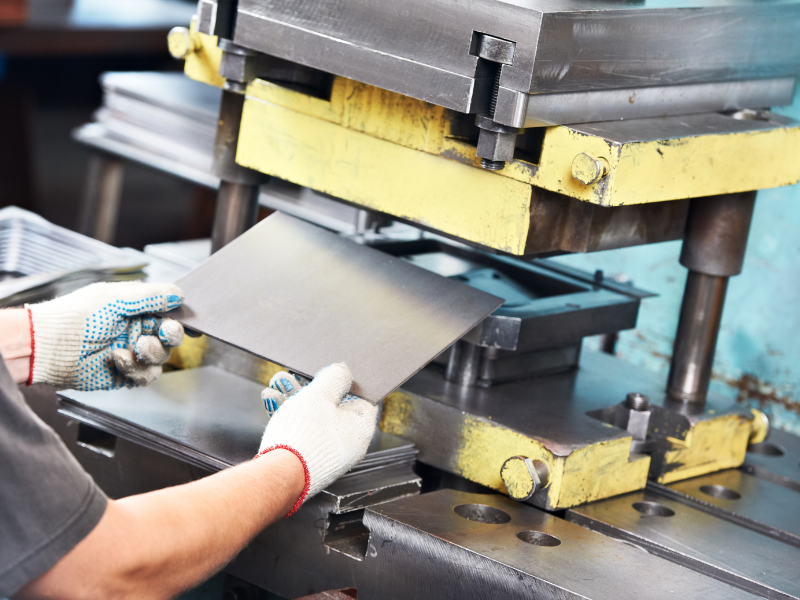In the world of metalworking, sustainability is becoming a hot topic. With environmental concerns on the rise, industries are seeking eco-friendly alternatives to traditional manufacturing practices. One area where sustainability is making waves is in sheet metal fabrication. In this article, we’ll explore some of the key eco-friendly practices being adopted in sheet metal fabrication and their impact on the environment.
Understanding Sheet Metal Fabrication
Before diving into eco-friendly practices, let’s first understand what sheet metal fabrication is all about. Sheet metal fabrication involves transforming flat metal sheets into various shapes and structures using processes like cutting, bending, and assembling. It’s used in a wide range of industries, from automotive and aerospace to construction and electronics.
The Environmental Impact of Traditional Sheet Metal Fabrication
Traditional sheet metal fabrication methods can have a significant environmental impact. Processes like welding and machining often produce harmful emissions and waste materials. Additionally, the use of non-renewable resources like fossil fuels and metals extracted from mines further exacerbates environmental issues.
Eco-Friendly Practices in Sheet Metal Fabrication
Fortunately, advancements in technology and a growing awareness of environmental issues have led to the development of eco-friendly practices in sheet metal fabrication. Companies like Dainsta are at the forefront of this movement, implementing innovative solutions to reduce the environmental impact of their operations. Here are some of the eco-friendly practices being adopted across manufacturing industry:
- Recycling and Reusing Materials: One of the simplest ways to reduce environmental impact is by recycling and reusing materials. Scrap metal generated during the fabrication process can be recycled and used to create new metal sheets, reducing the need for virgin materials.
- Energy-Efficient Machinery: Investing in energy-efficient machinery can significantly reduce the energy consumption of sheet metal fabrication operations. Newer machines are designed to minimize energy waste and optimize performance, resulting in lower overall energy usage and greenhouse gas emissions.
- Water-Based Cutting Techniques: Traditional cutting methods often use harmful chemicals and oils, which can pollute the environment. Water-based cutting techniques, such as water jet cutting, eliminate the need for toxic substances, making them a cleaner and more sustainable alternative.
- Lean Manufacturing Principles: Lean manufacturing principles focus on minimizing waste and maximizing efficiency. By streamlining processes and optimizing workflows, manufacturers can reduce resource consumption and environmental impact without sacrificing productivity.
- Renewable Energy Sources: Transitioning to renewable energy sources like solar energy and wind energy power can further reduce the carbon footprint of sheet metal fabrication facilities. By harnessing clean energy, manufacturers can power their operations while minimizing greenhouse gas emissions.
The Benefits of Eco-Friendly Sheet Metal Fabrication
Embracing eco-friendly practices in sheet metal fabrication offers a host of benefits, both for manufacturers and the environment:
- Cost Savings: While there may be initial investments involved in adopting eco-friendly practices, the long-term cost savings can be substantial. Reduced energy consumption, waste disposal costs, and regulatory compliance expenses can all contribute to a healthier bottom line.
- Improved Reputation: In today’s environmentally conscious world, consumers and businesses alike are increasingly favoring companies that prioritize sustainability. By embracing eco-friendly practices, sheet metal fabricators can enhance their reputation and attract eco-conscious customers.
- Compliance with Regulations: Environmental regulations are becoming stricter, with governments imposing stricter limits on emissions and waste disposal. By adopting eco-friendly practices, manufacturers can ensure compliance with these regulations and avoid costly fines and penalties.
- Reduced Environmental Footprint: Perhaps the most significant benefit of eco-friendly sheet metal fabrication is its positive impact on the environment. By minimizing resource consumption, emissions, and waste generation, manufacturers can help protect ecosystems and reduce their overall environmental footprint.
Conclusion
Sustainability is no longer just a buzzword – it’s a necessity. In the realm of sheet metal fabrication, eco-friendly practices are leading the way towards a greener, more sustainable future. By embracing recycling, energy efficiency, and renewable energy sources, manufacturers can minimize their environmental impact while reaping the benefits of cost savings and improved reputation. As the demand for sustainable products continues to grow, eco-friendly sheet metal fabrication is poised to become the new standard in the industry.


